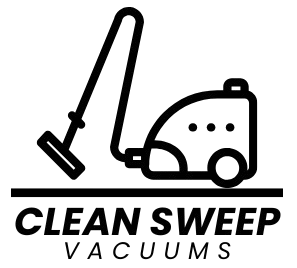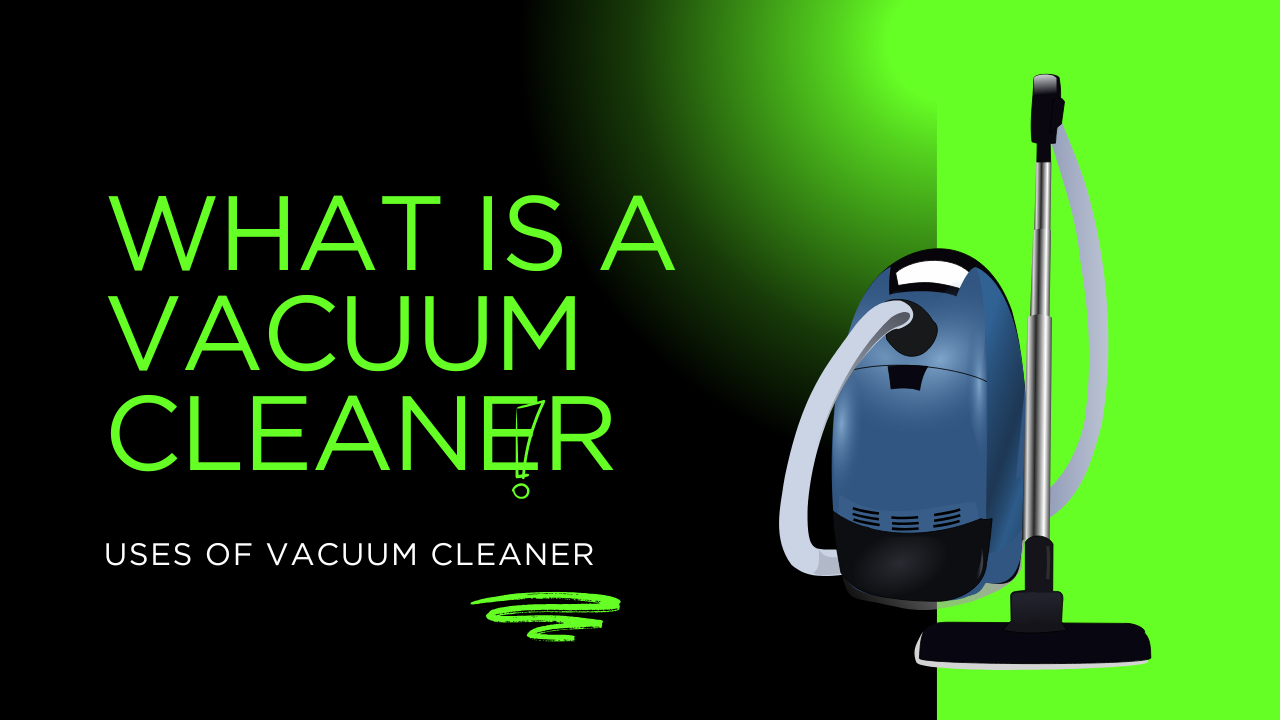What is a Vacuum Cleaner? Ultimate Guide to Understanding Its Function and Types
A vacuum cleaner is a device that uses suction to remove dirt, dust, and debris from floors and other surfaces. It works by creating a partial vacuum that draws particles into a collection container or bag. This simple yet effective tool has become a staple in homes and businesses worldwide.
When I think about cleaning, the vacuum cleaner stands out because it simplifies a task that would otherwise take much longer. Its design varies, from handheld models to upright and robotic versions, but the core function remains the same—efficiently lifting dirt.
Understanding how a vacuum cleaner works and its different types can help you choose the right one for your needs. Whether you want to keep your home spotless or maintain a commercial space, this knowledge is essential.
Definition of a Vacuum Cleaner
A vacuum cleaner is a device designed to remove dirt, dust, and debris from surfaces using suction. It operates through a combination of mechanical and electrical components to clean floors, upholstery, and other areas efficiently.
Basic Concept
I understand a vacuum cleaner as a machine that creates suction to pull in particles from surfaces. It typically consists of a motor that powers a fan, which generates airflow. This airflow draws dust and debris through an intake port into a filter or bag.
Most vacuum cleaners include attachments like brushes or nozzles to aid cleaning different surfaces. The key function is maintaining strong suction while trapping dirt inside the device, preventing it from escaping back into the environment.
READ MORE: Bissell Vacuum
Historical Development
The vacuum cleaner evolved from manual carpet sweepers in the late 19th century. Early models used hand pumps or bellows to generate suction, which limited effectiveness and user convenience.
In 1901, Hubert Cecil Booth invented the first powered vacuum cleaner, using an electrically driven fan. This innovation improved suction strength and led to portable designs in the 20th century.
Over time, vacuum cleaners have advanced to include features such as HEPA filters, cordless operation, and robotic technology, enhancing their efficiency and user-friendliness.
How Vacuum Cleaners Work
A vacuum cleaner uses mechanical and electrical components to create airflow that lifts dirt and debris. It traps particles inside through various filtration methods designed to capture dust while allowing clean air to pass out.
Suction Mechanism
The suction is generated by an electric motor that spins a fan inside the vacuum. This fan lowers the air pressure inside the vacuum chamber, causing outside air — along with dirt and debris — to rush in through the intake.
The airflow pulls particles from carpets, floors, and other surfaces. The strength of suction depends on the motor’s power and the design of the fan and air pathways. Filters and bags are placed beyond the fan to stop dirt before air exits the machine.
Filtration Systems
Filtration systems vary by vacuum type but commonly include bags or canisters to collect debris. Modern vacuums often use HEPA filters, which trap microscopic particles like allergens and fine dust.
Some models combine multiple filters to catch larger and smaller particles consecutively. I emphasize checking filter conditions regularly, as clogged filters reduce suction efficiency and can release dust back into the air. Proper filtration helps maintain airflow and indoor air quality.
Types of Vacuum Cleaners
Vacuum cleaners come in different designs tailored to various cleaning needs. They differ in portability, power, and method of use, which helps me decide which type fits my cleaning tasks best.
Upright Vacuum Cleaners
Upright vacuum cleaners are designed with the motor and suction head in one unit. They are typically heavier but cover large carpeted areas efficiently, making them useful for homes with lots of floorspace.
Most models include a brush roll that agitates carpet fibers to loosen dirt. This feature is especially effective on thick rugs.
They generally have larger dust bins, allowing for longer cleaning sessions without emptying. Upright vacuums often come with height settings to adjust to different carpet lengths.
Canister Vacuum Cleaners
Canister vacuum cleaners separate the motor and dust container from the cleaning head, connected by a hose. This design offers greater flexibility and makes them easier to maneuver around furniture.
They perform well on hard floors and stairs due to their lightweight cleaning heads. I find canister vacuums suitable for multi-surface cleaning because of this adaptability.
These vacuums usually have multiple attachments for different tasks like upholstery or tight spaces. Their quieter operation is another advantage over some upright models.
Specialized Vacuum Cleaners
Certain vacuum cleaners are designed for specific tasks or environments, offering features that standard models lack. These specialized devices enhance convenience, targeting particular cleaning needs with tailored functions.
Robotic Vacuum Cleaners
Robotic vacuums operate autonomously, programmed to clean floors without manual control. They use sensors to navigate around furniture and obstacles, adjusting paths to maximize coverage.
Most models perform daily cleaning on hard floors and low-pile carpets. Battery life varies, generally ranging from 60 to 120 minutes before needing a recharge. Many return automatically to charging docks.
Some offer scheduling, app control, and integration with smart home systems. However, their suction power is usually lower than upright vacuums, making them less effective on deep carpets or heavily soiled areas.
Handheld Vacuum Cleaners
Handheld vacuums are compact, lightweight, and portable, ideal for quick cleanups and tight spaces. They often run on rechargeable batteries, providing cordless convenience.
These vacuums excel in cleaning car interiors, upholstery, stairs, and small messes. Suction power varies but is sufficient for dust, crumbs, and pet hair.
Many handheld models include attachments such as crevice tools or brushes for versatile cleaning. Their small dust bin capacity requires frequent emptying during extended use.
Key Features to Consider
When choosing a vacuum cleaner, I focus on its power and performance first. I also assess the attachments available, as they can significantly affect how versatile the vacuum is for different surfaces.
Power and Performance
Power in a vacuum is often measured in watts or air watts, and I look for a model that balances suction strength with energy efficiency. A strong suction helps pick up dirt, dust, and pet hair effectively.
I also consider the motor type; brushless motors usually last longer and offer consistent suction. For carpeted floors, a vacuum with a motorized brush roll is important to agitate fibers and remove embedded debris.
Filtration is another factor. HEPA filters trap fine particles and allergens, making the vacuum better for allergy sufferers. Noise levels matter too—some powerful models can be loud, so I check decibel ratings if quiet operation is important.
Attachments and Accessories
Attachments extend a vacuum’s usefulness around the home. I value tools like crevice nozzles for narrow gaps and dusting brushes for delicate surfaces. A pet hair tool is essential if I have animals.
Some vacuums come with adjustable wands or flexible hoses, which improve access under furniture or in tight spots. Motorized mini brushes are particularly helpful on upholstery and stairs.
Storage for attachments matters as well. I prefer models where accessories are easy to attach and store on the vacuum itself, to avoid losing parts. The quality of these tools also impacts their durability and cleaning effectiveness.
Applications and Uses
Vacuum cleaners serve various cleaning needs depending on the context. Whether used at home or in larger settings, they are designed to handle specific tasks efficiently.
Residential Cleaning
In homes, vacuum cleaners remove dust, dirt, and allergens from floors, carpets, and upholstery. I find that cordless models offer convenience for quick cleanups, while upright vacuums work well on thick carpets.
Many devices include attachments for cleaning furniture, curtains, and tight spaces. Some advanced models have HEPA filters to improve indoor air quality by trapping small particles.
Regular use helps maintain hygiene and protects surfaces from wear. Vacuum cleaners also reduce the frequency of deep cleaning by preventing dirt buildup.
Commercial and Industrial Use
In commercial spaces like offices and retail stores, vacuums handle larger areas with higher foot traffic. I rely on commercial-grade machines for durability and powerful suction needed in these environments.
Industrial vacuums can pick up hazardous materials like metal shavings or chemical dust safely. They often come with specialized filters and rugged designs for continuous heavy use.
These machines support maintenance of cleanliness standards critical for safety, appearance, and compliance with health regulations. They also include features like large capacity bags or tanks to reduce downtime.
Maintenance and Care
Proper maintenance keeps a vacuum running efficiently and extends its life. I focus on regular cleaning of parts and timely replacement of filters to avoid performance loss.
Routine Cleaning
I clean the vacuum brush roll and nozzle at least once a week to prevent hair and debris buildup. Wrapped hair can reduce suction and damage the motor over time.
Emptying the dustbin or replacing the bag regularly is essential. If it’s full, the vacuum loses suction power and strains the motor.
I also check the hose and attachments for clogs. Blockages restrict airflow, which reduces effectiveness and can cause overheating.
Filter Replacement
Filters trap dust and allergens, so I replace them according to the manufacturer’s schedule, usually every 3 to 6 months. Using a dirty filter decreases suction and releases dust back into the air.
HEPA filters require special attention because they capture finer particles. I ensure I get the exact replacement to maintain air quality.
Before installing a new filter, I always clean the area around the filter compartment to prevent dust from settling and causing blockages.
Environmental Impact
I consider the environmental impact of vacuum cleaners to be an important aspect of their use. Most vacuum cleaners consume electricity, which contributes to energy demand and potentially increases carbon emissions depending on the energy source.
Another factor I observe is the materials used to manufacture vacuums. Many contain plastics and metals that require mining and refining processes, which can be energy-intensive and polluting. Disposal is also a concern, as broken units often end up in landfills.
I note that some models include HEPA or other advanced filters. These help reduce airborne dust and allergens, improving indoor air quality but also may require frequent replacement, creating waste.
Here is a simple comparison of vacuum cleaner types and their environmental considerations:
| Vacuum Type | Energy Use | Waste Produced | Lifespan |
|---|---|---|---|
| Bagged | Moderate | Bags replaced often | Moderate |
| Bagless | Moderate | Filters replaced | Moderate to long |
| Robot Vacuums | Low to moderate | Battery disposal | Usually shorter |
I try to choose models with energy efficiency ratings and longer-lasting parts. Using a vacuum cleaner responsibly also helps minimize its overall environmental footprint.
Recent Innovations in Vacuum Cleaners
I have noticed that robotic vacuums have become much more advanced recently. They use smart mapping technology to navigate homes efficiently, avoiding obstacles and cleaning in systematic patterns.
Another innovation I find useful is improved battery life in cordless models. Many vacuums now offer longer run times and faster charging, which makes them more convenient for everyday use.
Some models feature air filtration systems with HEPA filters. These traps capture fine dust and allergens, which is beneficial for people with allergies or asthma.
I also see an increase in vacuums with multi-surface adaptability. They automatically adjust suction and brush height when moving from carpet to hard floors.
Here’s a quick list of key recent features:
- Smart navigation and mapping
- Extended battery life and faster charging
- HEPA filtration for improved air quality
- Multi-surface cleaning adjustments
These innovations focus on improving efficiency, ease of use, and health benefits. My experience shows that they make cleaning less time-consuming and more effective.

